What are Annuals?
The Annuals Plantation Guide provides essential insights into planting and caring for annuals, which are plants that complete their entire life cycle—from germination to seed production—within a single year. After flowering and producing seeds, these plants typically die, showcasing their unique fast-paced life cycle. Known for their rapid growth and vibrant blooms, annuals provide an instant splash of color in gardens, making them ideal for filling gaps in perennial beds or creating seasonal displays. With a wide variety of species available, they offer endless possibilities for creativity in garden design. This guide will help you effectively choose, plant, and nurture annuals to enhance your outdoor space beautifully.
Categories of Annual Plants
Annual plants can be categorized into four main types based on their growth cycles and climatic adaptability. Understanding these categories helps gardeners select the right plants for their specific growing conditions and seasonal goals.
1. Summer Annuals
Summer annuals germinate in the spring, grow rapidly during warm months, and complete their life cycle by the fall. These plants thrive in warm weather and often feature vibrant blooms that attract pollinators. Popular examples include:
- Marigolds: With bright orange and yellow flowers, marigolds not only beautify gardens but also attract beneficial insects, making them a staple in many vegetable gardens.
- Petunias: Known for their versatility, petunias come in various colors and can be used in hanging baskets, window boxes, or traditional flower beds.
- Zinnias: These flowers are celebrated for their ability to attract butterflies and come in a wide array of colors, making them perfect for adding diversity to any garden.
2. Winter Annuals
Winter annuals germinate in the fall, survive through winter, and complete their life cycle in spring. They are specially adapted to cooler temperatures and can often withstand light frosts. Examples include:
- Corn Salad (Valerianella locusta): A nutritious leafy green that thrives in cooler weather and can be harvested early in the spring.
- Pansies: These cheerful flowers can bloom in late winter or early spring, providing a welcome splash of color when most other plants are still dormant.
3. Hardy Annuals
Hardy annuals can be sown directly into the ground in early spring or even late winter. They are designed to thrive in colder conditions and can tolerate light frosts, making them some of the first plants to bloom in the garden. Examples include:
- Snapdragons: Known for their colorful spikes, snapdragons add height and visual interest to garden beds and can flourish in cooler temperatures.
- Calendula: Often referred to as pot marigold, calendula boasts bright yellow or orange flowers and is frequently grown for its medicinal properties as well as its beauty.
4. Half-Hardy Annuals
Half-hardy annuals are sensitive to frost and should be planted only after the last frost has passed. They prefer warmer temperatures and often perform best when started indoors before being transplanted. Examples include:
- Zinnias: These cheerful blooms thrive in warm conditions, creating a stunning display that attracts butterflies and other pollinators.
- Cosmos: Known for their delicate, feathery foliage and vibrant blooms, cosmos are easy to grow and can flourish in poor soil conditions, making them low-maintenance options for gardeners.
Companion Plants for Annuals
Companion planting is a technique that can enhance the growth and health of annuals. By strategically pairing plants, gardeners can improve pest control, pollination, and nutrient uptake. For example, planting marigolds alongside vegetables can deter harmful pests, while herbs like basil can improve the flavor and yield of nearby tomatoes. By considering companion plants, gardeners can create more resilient and productive garden spaces.
Advantage and Disadvantages of Planting Annuals
One of the standout features of annuals is their vibrant colors, which can instantly brighten up any garden and create a lively atmosphere. With such a wide variety of species and cultivars available, gardeners have endless opportunities for customization and creativity in their designs. Additionally, annuals grow quickly and bloom within the same season, providing immediate gratification for those eager to enjoy their garden.
annuals also have some drawbacks. They are short-lived and need to be replanted every year, which can be time-consuming and labor-intensive. Their maintenance demands regular attention, including consistent watering and fertilization, to ensure they flourish during their brief lifespan. Over time, the cost of purchasing annuals can add up, making them potentially more expensive than perennials, which return year after year.
Types of Annuals: Flowers and Plants
Annuals come in many forms, ranging from vibrant flowering plants to leafy greens. They can enhance both the aesthetics and productivity of gardens. With proper selection, annuals can serve various purposes, such as attracting pollinators, providing cut flowers for arrangements, or producing fresh herbs and vegetables for culinary use.
Amazing Annual Flowers for Sun
- Sunflowers: Iconic for their towering height and bright yellow blooms, sunflowers thrive in full sun and can create stunning focal points in any garden.
- Petunias: Adaptable and colorful, petunias perform exceptionally well in sunny spots, adding cheerful color to containers and garden beds alike.
Amazing Annual Flowers for Shade
- Impatiens: These shade-loving plants thrive in low-light conditions, providing vibrant colors that can brighten up dark corners of the garden.
- Begonias: Known for their attractive foliage and long-lasting blooms, begonias are excellent choices for shaded areas, making them ideal for patios and under trees.
When and How to Plant Annual Flowers
Planting annual flowers can add vibrant color and beauty to your garden or patio. Here’s a guide on the best time to plant them and the steps to ensure successful growth.
When to Plant Annual Flowers
Timing: The best time to plant annual flowers typically depends on your local climate. Generally, you should aim to plant them after the last frost date in your area, which is usually in spring. For many regions, this falls between mid-April and mid-May, but it’s essential to check your local gardening calendar.
Soil Temperature: Annuals thrive in warm soil. A good rule of thumb is to wait until the soil temperature reaches about 60°F (15°C) for most varieties. You can use a soil thermometer to monitor the temperature.
How to Plant Annual Flowers
Choose the Right Spot: Select a location that receives adequate sunlight, usually 6-8 hours of direct sunlight per day. Ensure the soil is well-draining to prevent waterlogging.
Preparing the Soil
Before planting, clear debris and weeds from the area. Tilling the soil improves aeration and allows roots to penetrate more easily. Incorporating organic matter boosts nutrient levels, setting the stage for healthy plants.
What Type of Soil Should I Use?
Annuals prefer well-draining, nutrient-rich soil. A mix of garden soil with organic compost enhances fertility and encourages robust growth. Good drainage is essential to prevent root rot and other issues.
Placing the Plant
When placing annuals in the garden, space them according to their mature size. Consider factors like sunlight exposure and water requirements to ensure each plant has the optimal conditions for growth.
Planting Technique:
- If starting from seeds, follow the instructions on the seed packet for planting depth and spacing. Generally, seeds should be sown at a depth of two to three times their size.
- For seedlings, dig a hole that is slightly larger than the root ball. Gently remove the seedling from its container, loosen any tightly bound roots, and place it in the hole. Backfill with soil and water well.
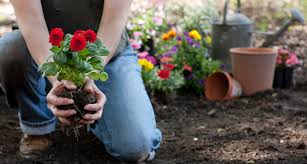
Growing Annuals from Seed
Starting annuals from seed can be a rewarding experience for gardeners. Following the seed packet instructions for planting depth and spacing is crucial for successful germination. Providing adequate light and moisture will support healthy seedlings as they develop.
Propagating Annuals from Cuttings
Many annuals can be easily propagated through cuttings. Take healthy stem cuttings, remove lower leaves, and place them in water or a rooting medium until roots develop. This method allows gardeners to expand their plant collection without needing to purchase new seeds or plants.
Watering
How Much Water Do Annuals Need? Most annuals require consistent moisture but should not be overwatered. A good rule of thumb is to water deeply once or twice a week, allowing the soil to dry slightly between waterings to promote healthy root development.
Fertilizing
To ensure optimal growth, feed annuals with a balanced fertilizer every 4-6 weeks. Fertilization helps replenish nutrients in the soil and supports flowering, leading to more abundant and vibrant blooms throughout the growing season.
Mulching:
Apply a layer of mulch around the plants to retain moisture, suppress weeds, and regulate soil temperature.
Pruning
Regularly deadheading spent blooms encourages plants to produce more flowers and helps maintain a tidy appearance. Additionally, pruning can improve air circulation, reducing the risk of disease and promoting overall plant health.
Annuals Planting Growing Tips
- Choose the Right Varieties: Consider your local climate, soil conditions, and sunlight availability when selecting annuals for your garden.
- Rotate Crops: To prevent disease and nutrient depletion, rotate annual plant families each year, giving the soil a chance to recover.
- Monitor for Pests: Keep a vigilant eye out for pests and diseases, and take action promptly to protect your plants and ensure their longevity.
Designing with Annuals
Annuals can be creatively integrated into garden design, used in borders, as focal points, or in mixed plantings. Their diversity allows for unique combinations that can change from season to season, providing fresh visual interest throughout the year.
Containers and Overwintering
Many annuals can be successfully grown in containers, offering flexibility in placement and design. Consider overwintering some varieties indoors to extend their lifespan and enjoy their beauty for multiple seasons.
The Best Annual Plants to Grow
Some of the top choices for vibrant and resilient annuals include marigolds, petunias, zinnias, and cosmos. Each of these plants brings unique charm and benefits to the garden, making them beloved selections for both novice and experienced gardeners alike.
Incorporating annuals into your gardening plans can transform your outdoor space, providing color, texture, and joy throughout the growing season. Happy planting!


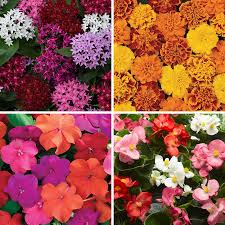

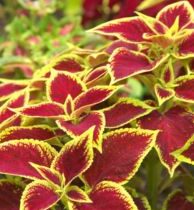
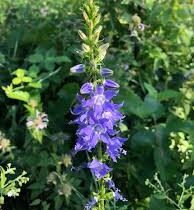
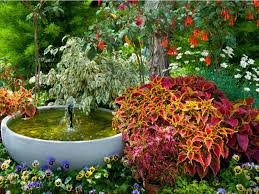

Leave a Reply
View Comments